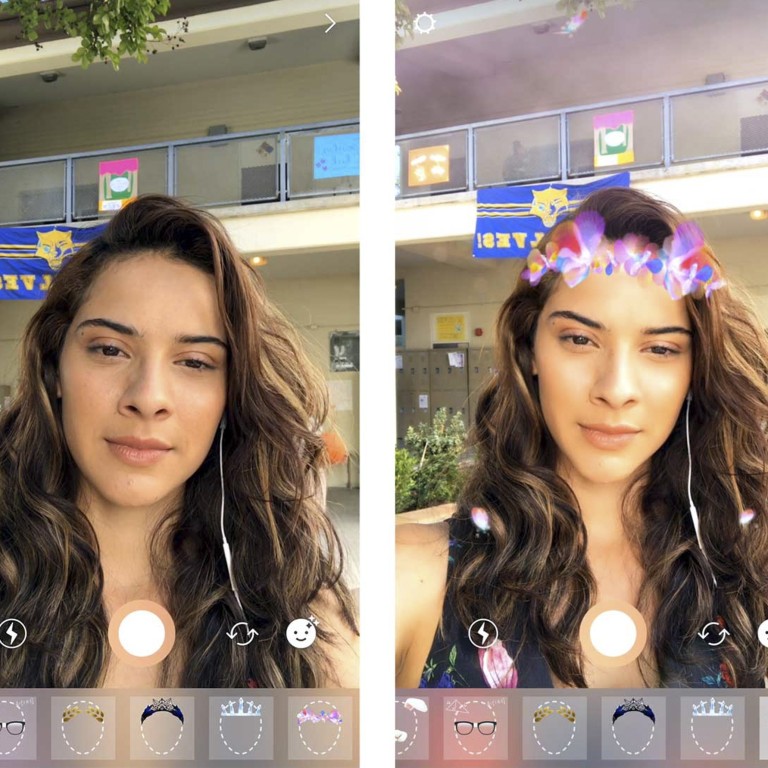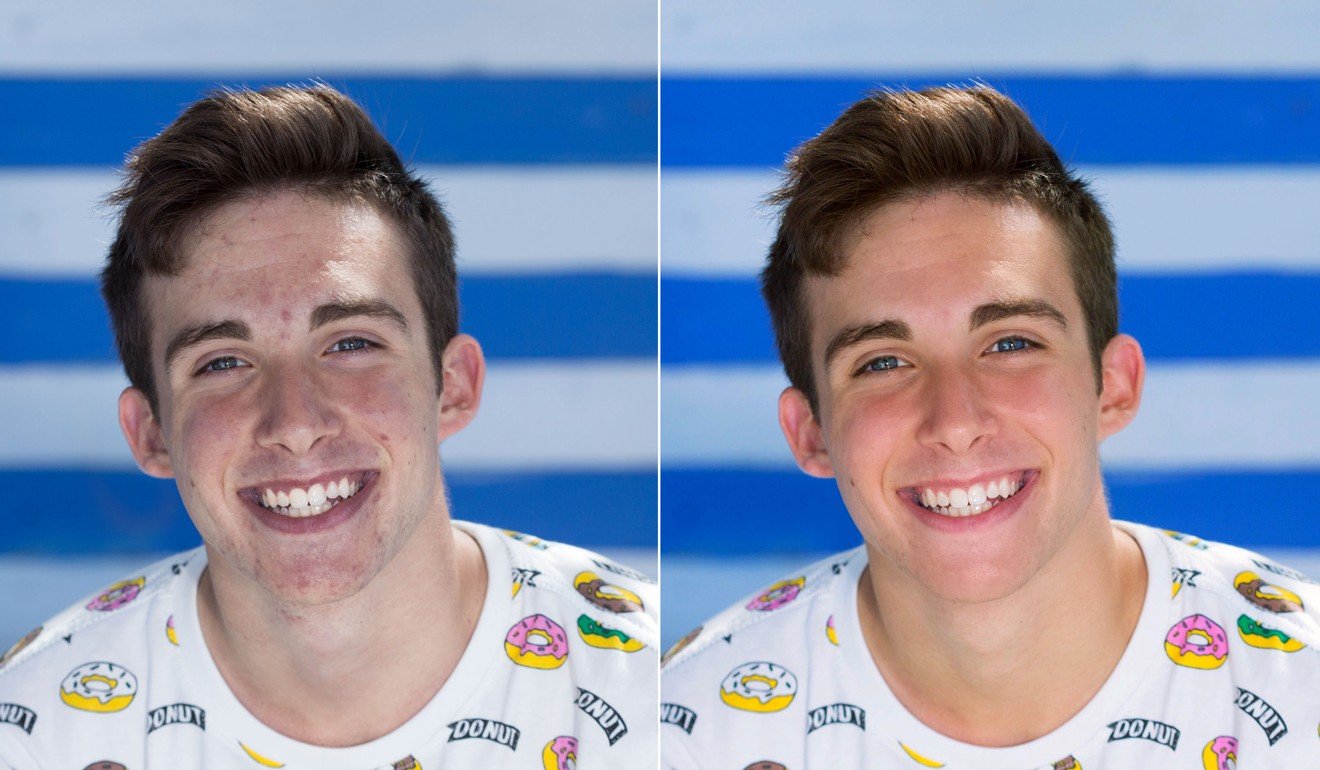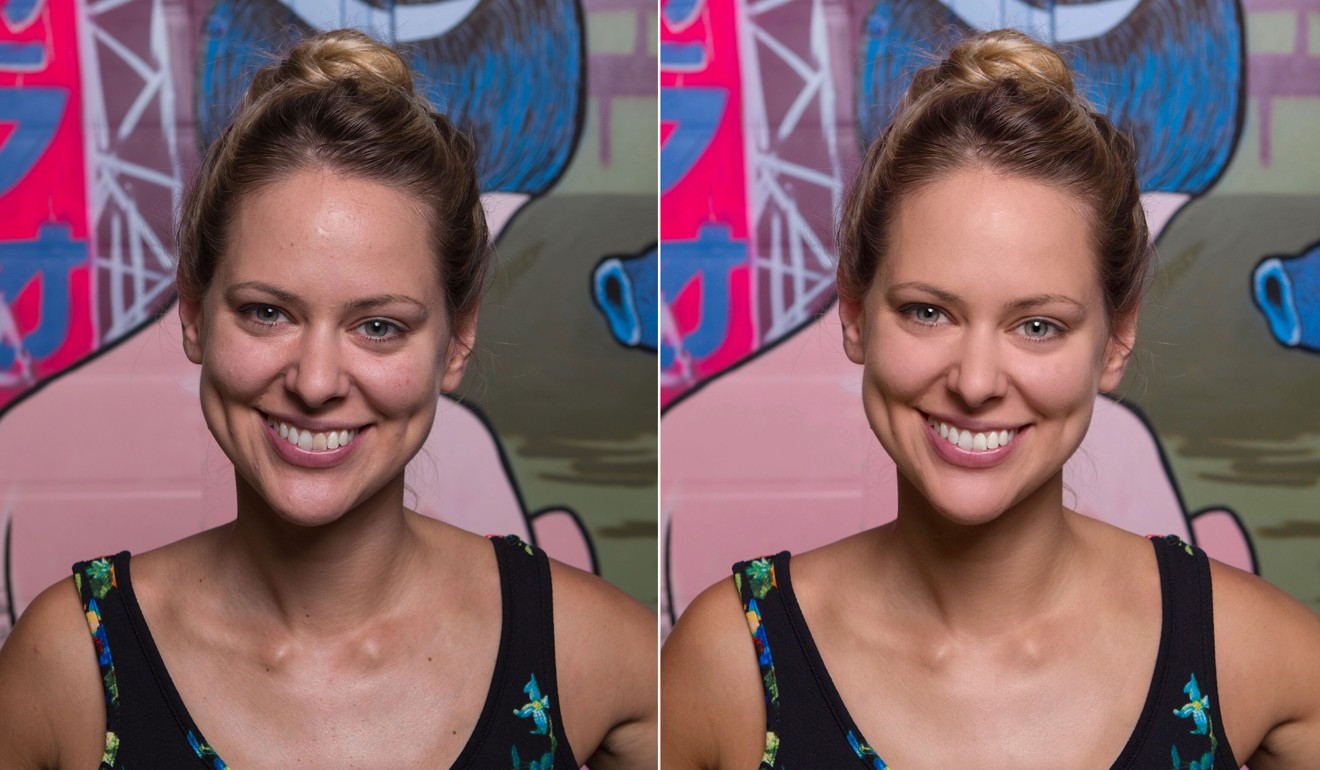
Are photo filters harmful? How Snapchat dysmorphia drives people to seek cosmetic surgery
- Airbrushed photos with cartoon filters seem harmless, but can lead to an obsessive search for the unobtainable ‘perfect’ shot
- Cosmetic surgeons report an increase in the number of people wanting to look like their heavily filtered images.
People used to call Anika the Snap Queen. Between 19 and 21, she was “obsessed with Snapchat, to the point where I had 4,000 followers”. At the peak of her “tragic” behaviour, she reckons now – a year after quitting the image-sharing app – she was taking 25 selfies a day.
She liked the sense of having a platform, she says, with the average selfie getting 300 replies. “It was like, ‘Oh my God, I’m so popular – I’ve got to show my face.’”
Hong Kong youths: glued to their screens and ‘alarmingly’ unfit
But the filters were also part of the appeal. The Londoner had long been insecure about the slight bump in her nose. Snapchat’s effects, which let you embellish your selfies with dog ears, flower crowns and the like, would also erase the bump entirely. “I’d think, ‘I’d like to look how I look with this filter that makes my nose look slimmer’.”
Socialising in the real world, she would choose her seat to avoid being seen in profile. She recognises that this was irrational – “but it happens. I feel like we’re in a world where a lot of people are seen to be perfect, and so we try and reach that peak.”

Sometimes her followers would suggest meeting in person. “Then it would be like, ‘I have to look like my selfie.’” It was around this time, the height of her Snapchat obsession, that Anika started contacting cosmetic doctors on Instagram.
The phenomenon of people requesting procedures to resemble their digital image has been referred to as “Snapchat dysmorphia”.
The term was coined by the cosmetic doctor Tijion Esho, founder of the Esho clinics in London and Newcastle, northeast England. He had noticed that where patients had once brought in pictures of celebrities with their ideal nose or jaw, they were now pointing to photos of themselves.
While some used their selfies – typically edited with Snapchat or the airbrushing app Facetune – as a guide, others would say, “‘I want to actually look like this’, with the large eyes and the pixel-perfect skin,” says Esho. “And that’s an unrealistic, unattainable thing.”
A recent report in the US medical journal JAMA Facial Plastic Surgery suggested that filtered images’ “blurring the line of reality and fantasy” could be triggering body dysmorphic disorder (BDD), a mental health condition where people become fixated on imagined defects in their appearance.
Like Esho, Dr Wassim Taktouk uses non-surgical, non-permanent “injectables” such as Botox and dermal fillers to enlarge lips or smooth a bumpy nose. He recalls a client coming to see him in his clinic in Kensington, west London, upset after a date made through an app had gone south.
“When she’d met the man, he had been quite disparaging: ‘You don’t look anything like your picture.’”
The woman showed Taktouk the heavily filtered image on her profile and said: “I want to look like that.” It was flawless, he says – “without a single marking of a normal human face”. He told her he couldn’t help. “If that’s the picture you’re going to put out of yourself, you’re setting yourself up for disappointment.”
Taiwan’s ‘Bikini Climber’ social media star Gigi Wu dies after ravine fall in Yushan national park
Why do we take so many photos of ourselves? A 2017 study into “selfitis”, as the obsessive taking of selfies has been called, found a range of motivations, from seeking social status to shaking off depressive thoughts and – of course – capturing a memorable moment.
Another study suggested that selfies served “a private and internal purpose”, with the majority never shared with anyone or posted anywhere – terabytes, even petabytes of photographs never to be seen by anyone other than their subject.
With so much of life now lived online, from dating to job-hunting, recent, high-quality images of yourself are also a necessity – it is no wonder that Facetune (Apple’s most popular paid-for app of 2017) and the free follow-up Facetune 2 have more than 55 million users between them.
Stav Tishler of Lightricks, the company behind them, says making airbrushing accessible has challenged “that illusion that ‘a perfect body’ exists … and levelled out the playing field”.
“Everyone knows everyone is using it, supermodels and ‘everyday’ people alike,” he says.

However, a 2017 study in the journal Cognitive Research: Principles and Implications found that people only recognised manipulated images 60 per cent to 65 per cent of the time. Esho says the pervasiveness of airbrushing on social media means it can create “unrealistic expectations of what is normal” and lower the self-esteem of those who don’t use it. “It’s a vicious cycle.”
When the American Academy of Facial Plastic and Reconstructive Surgery surveyed its members in 2017, 55 per cent of surgeons said patients’ motivation was to look better in selfies, up from just 13 per cent in 2016.
Even novelty filters such as Snapchat and Instagram’s, as well as adding bunny ears or specs to your selfie, plump your lips, erase your pores and lift your jowls while they are at it. (Snapchat declined to respond on the record.)
“The first thing that any of these filters do is give you a beautiful complexion,” says Taktouk. “Your naso-labial [laugh] lines, from the nose to mouth, aren’t existent – but that’s not a human face. No one doesn’t have those. You can see them in children.”
No luggage, no plastic, no selfies: how travel is set to change in 2019
Clients still request their removal, and that of “the tear trough” – the groove down from the inner corners of the eyes. “People wanting bigger eyes is another one – it’s just not possible.”
So when does what is meant to be harmless fun start to become a problem? The general rule, says Professor David Veale, a consultant psychiatrist at the Maudsley hospital in south London, is that you can “think about your appearance for an hour a day before it becomes a disorder” – but for a diagnosis, it must be accompanied by significant distress or inability to function normally. People with BDD take selfies because they are convinced “that they are hideous”.
In 2014, then 19-year-old Danny Bowman from Northumberland in northeast England was reported to be “Britain’s first selfie addict” after being interviewed about his experience of BDD.
His problems had begun four years earlier, when he was rejected by a modelling agency at the same time as he was being bullied at his new school and on Facebook. “For me, it was confirmation that I did look ugly.”

Bowman was soon spending hours before the mirror, slathering himself in acne cream and moisturiser and monitoring a steady stream of selfies for real-time improvement. After three months he dropped out of school, and the selfie-taking increased to hundreds a day.
“I was trying to see some gradual improvement, and take that photo that I was pleased with. I was just trying to get that relief, and I couldn’t get it. There wasn’t a perfect photo. There isn’t a perfect photo.”
After six months of being housebound, consumed by his daily rituals, he tried to kill himself. “A lot of people say looking at themselves in the mirror probably makes them feel insecure, but imagine scanning through 200 pictures a day. I was just exhausted. I felt like there was no way out.”
Depression in girls linked to greater time spent on social media
His mother – like his father, a mental health professional – found him in time and he was diagnosed with BDD. Part of his 12-week treatment involved restricting access to his phone.
Now 24, Bowman is studying at the University of York in the north of England and campaigns on issues related to mental health and positive body image.
He has raised concerns about the impact of Instagram with friends he sees “posting photographs of themselves every other day, Facetuning themselves, making themselves look unlike the way they look. That was me, but on an amplified scale.”
They have reacted defensively, he says. “It has become such a normal thing that people don’t see what they’re doing as abnormal.”
He very rarely takes selfies now. “I just don’t feel the need to do it,” he says.

